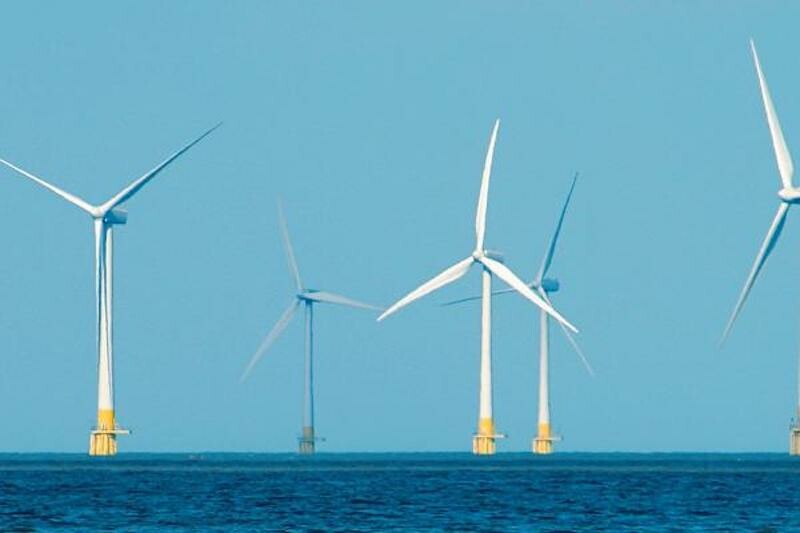The Biden administration’s headlong dive into developing offshore wind was called a “once in a generation opportunity” by Liz Burdock, president and CEO of the Business Network for Offshore Wind.
The $4.37 billion that wind developers paid to obtain leases during the Bureau of Ocean Energy Management’s New York Bight auction in late February “demonstrates incredible demand and enthusiasm for offshore wind,” BOEM director Amanda Lefton said at the network’s April 26-29 International Partnering Forum in Atlantic City, N.J.
Meeting that demand will mean working with the U.S. Department of Energy on permitting and planning transmission pathways to “put new lease areas on the table,” said Lefton.
The sale prices show companies are willing to commit capital to the wind enterprise because of the anticipated financial opportunities, “not because there are some pretty colors on a (leasing) map,” quipped Sam Eaton, executive vice president of offshore development in the Americas with RWE Renewables.
Eaton’s company, with its venture partner National Grid, paid $1.1 billion to secure one tract southeast of Barnegat Light, N.J. The companies, operating as Bight Wind LLC, beat out five competitors for the tract in 64 hours of frenetic bidding over three days, shattering U.S. records for leasing in federal waters. That sudden escalation in leasing costs has raised some concern in the wind industry.
The growing expense of leases will be “non-trivial to (electric) ratepayers,” said Clint Plummer, CEO of Rise Light and Power. Rising costs will create more incentive to make the most out of those expensive lease areas, he said. Inflation, and ramped-up material costs for the next generation of 13- to 15-megawatt turbines that developers want for maximizing efficiency, is a growing concern.
Plummer’s company works to convert old fossil fuel energy sites on land to fit into a renewable energy grid. He says that’s one way to gain efficiencies that save ratepayers money and help restore local environments. In places like his hometown New York City, “there’s no other way to build large-scale renewables in that area.”
Three decades of European experience with offshore wind gradually raised efficiency and lowered costs, which presents itself as a roadmap for U.S. development.
But that process required billions of euros invested in key northern European ports since the 1990s, pointed out Joshua Weinstein, vice president and head of offshore development at Invenergy. The U.S. does not yet have the wind power equivalent of the Gulf of Mexico oil and gas hub at Port Fourchon, La.
But there is progress on that front, said Jane Cohen, who directs New Jersey Gov. Phil Murphy’s Office for Climate Action. The New Jersey Wind Port in Salem County near the head of Delaware Bay is under construction, and Murphy announced in late April that it will be the base for building Ørsted’s Ocean Wind project off Atlantic City.
Up the Delaware River at Paulsboro, N.J., steel fabricator EEW is building the turbine tower components. The first monopile arrived in early May.
Building the industry has key challenges ahead, panelists said.
The U.S. supply chain is being complicated by growing inflation, along with vessel requirements and the “need for more seabed access” with continued BOEM leasing, said David Hardy, president of Ørsted Offshore North America.
Hardy and other speakers stressed that the industry’s success will depend on having supply chain work distributed across the U.S., deep into the Midwest and South. If that sounds familiar, it’s the same formula that ensured political success for ambitious national efforts like the late 20th century U.S. space program.
“We need to change minds on both sides of the aisle that this isn’t just about green energy,” said Hardy. It can’t just be limited to coastal states, added Laura Beane, president of Vestas North America.
Inflation and escalating material costs are on the minds of wind developers and suppliers, and the market has been rattled by reports about wind turbine manufacturers’ financial difficulties.
Those companies “struggling to make returns” underscore the wind industry’s need for more cooperative approaches, said Stephen Bull, executive vice president renewables with Aker Solutions. Playing off competitors to get a better deal “cannot continue,” he said.
The effort to develop U.S. offshore wind has been driven substantially by state governments in the Northeast and Mid-Atlantic with their goals for renewable energy and winning major investment and jobs in their own economies.
The better approach now is regional cooperation among states, Bull said, citing the West Coast, and Virginia, Maryland and North Carolina efforts to jointly promote wind development.
The industry’s players need to “toss out our transactional behaviors and act more like partners,” said Richard Voorberg, president of Siemens Energy North America.
“The problems that we have as an industry are beautiful problems to have,” with companies scrambling to fill requests for proposals and working on supply chains, said Bill White, president and CEO of Avangrid Renewables, a partner with Copenhagen Infrastructure Partners in the 800-megawatt Vineyard Wind project off Massachusetts.




